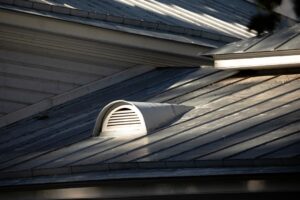TPO Roofing: Extreme Weather Performance
Extreme weather can compromise even the sturdiest roof, so choosing the right membrane determines whether a property withstands heat waves, subzero freezes, hurricane‐force winds, or hailstorms. In this guide, we compare thermoplastic polyolefin (TPO) roofing against EPDM, PVC, modified bitumen, and metal roofing across extreme‐weather challenges. You’ll learn how TPO’s composition drives flexibility, energy savings, and seam integrity; see data‐based comparisons in heat, cold, wind, and hail; explore head‐to‐head performance tables; and discover why Gomez Roofing’s expert installations deliver long‐term protection and cost benefits.
What Is TPO Roofing and What Are Its Core Strengths?
Thermoplastic polyolefin (TPO) roofing is a single-ply membrane combining polypropylene and ethylene-propylene rubber, and it offers robust defense against ultraviolet radiation, thermal shock, and organic growth. Its unique polymer blend welds into monolithic seams, eliminating fastener penetrations and enhancing wind uplift resistance in storm-prone regions.
What Is Thermoplastic Polyolefin (TPO) Roofing?
TPO roofing is a factory-manufactured, single-layer membrane composed of a polyolefin base reinforced with polyester or fiberglass scrim. This design creates a lightweight, yet puncture-resistant roof surface. For example, a 60-mil TPO sheet weighs less than 1.5 pounds per square foot but still outperforms older asphalt systems in durability. Its thermoplastic nature allows on-site heat welding to form seamless, watertight bonds.
Which Key Properties Make TPO Ideal for Extreme Weather?
TPO membranes deliver three interrelated advantages:
- Flexibility – The polymer matrix remains pliable from −40 °F to 200 °F, reducing crack risk under freeze-thaw cycles.
- Weldability – On-site hot-air welding fuses sheets into a continuous barrier, eliminating mechanical fasteners that can loosen in wind events.
- UV Resistance – UV absorbers and reflective pigments shield the membrane’s chemical bonds from photodegradation, preserving tensile strength and elongation.
These attributes combine to resist cracking, splitting, or seam failure when temperatures swing dramatically.
How Does TPO Roofing Provide Energy Efficiency Benefits?
TPO’s bright white top surface exhibits high solar reflectance (often 80–85 %) and strong thermal emissivity (up to 0.90). By reflecting a large portion of incoming infrared radiation, a TPO roof reduces rooftop temperatures by as much as 50 °F compared to traditional dark roofs, cutting cooling costs by 10–25 % annually in hot climates. For instance, commercial facilities in desert regions report up to a 20 % reduction in electric bills after switching to a white TPO system.
Energy Savings After TPO Roof Installation
Numerous commercial buildings have reported energy cost reductions of 20 to 30 percent after switching to TPO roofing systems, including warehouses, schools, and office buildings.
This source supports the article’s claims regarding the energy-saving benefits of TPO roofing.
How Does TPO Roofing Perform in Extreme Heat and UV Exposure?
When temperatures rise above 120 °F, roof membranes face heat-induced softening and accelerated UV aging. TPO’s engineered reflectivity and stabilizers defend against these threats to maintain structural integrity.
Why Is TPO Roofing Highly Reflective in Hot Climates?
TPO roofing reflects the sun’s rays through titanium dioxide pigments embedded during manufacturing. This reflective layer prevents solar energy absorption, so roof deck temperatures remain below damaging thresholds. Reflectivity data show TPO staying within 10 °F of ambient air temperature on 100 °F days, whereas black asphalt can exceed 160 °F.
Reflectivity Comparison in High Heat
| Membrane Type | Solar Reflectance (%) | Roof Surface Δ (°F) |
|---|---|---|
| TPO (white) | 80–85 | +8–10 |
| EPDM (black) | 5–10 | +30–40 |
| Modified Bitumen | 15–25 | +20–25 |
TPO’s superior reflectance lowers rooftop heat gain and protects insulation, transitioning us to its UV-resistance benefits.
How Does TPO Resist UV Degradation Compared to Other Materials?
TPO incorporates UV stabilizers—carbon black and Hindered Amine Light Stabilizers (HALS)—which neutralize free radicals generated during ultraviolet exposure. By contrast, PVC membranes without advanced stabilizers can yellow and embrittle after prolonged sun exposure. Long-term field studies reveal TPO retains over 90 % of its tensile strength after 10 years in desert climates, while some PVC systems drop below 75 %.
Proven Performance: Aged TPO Field Study
A study demonstrated the ability of TPO to provide superior performance in heat aging and UV stability, with TPO membranes meeting ASTM requirements for newly manufactured membranes even after years of service.
This supports the article’s claims about TPO’s durability and resistance to UV degradation.
How Does TPO Compare to PVC and Modified Bitumen in Heat Resistance?
TPO outperforms PVC in heat-aging tests because its olefinic backbone shows less chain scission under high temperatures. Modified bitumen softens and flows above 180 °F, risking membrane deformation. TPO’s heat-deflection temperature (185 °F) remains stable due to its crystalline phase, offering a wider service range.
How Resilient Is TPO Roofing in Extreme Cold and Thermal Shock?
Cold weather challenges membranes with contraction, loss of flexibility, and potential seam stress. TPO’s polymer formulation mitigates these issues through inherent low-temperature toughness.
What Makes TPO Flexible at Low Temperatures?
TPO membranes contain plasticizers that lower the glass transition temperature to −40 °F, preserving elasticity and reducing crack formation. Flexibility tests show a 60-mil TPO sample bending around a 1-inch mandrel at −30 °F with no surface cracking.
Cold-Weather Flexibility Comparison
| Material | Minimum Service Temp (°F) | Mandrel Bend Rating |
|---|---|---|
| TPO | −40 | No cracking |
| EPDM | −20 | Minor creasing |
| Modified Bitumen | 0 | Cracking observed |
This pliability prevents thermal shock damage and leads into real‐world performance in northern regions.
How Does TPO Roofing Compare to EPDM in Cold Weather Durability?
EPDM rubber can harden below −20 °F, raising the risk of cracks at seams and flashing. TPO’s blend maintains over 200 % elongation in cold, compared to EPDM’s 120 %, ensuring seam integrity and water tightness under snow loads and ice cycles.
Are There Case Studies Showing TPO Performance in Northern Climates?
In Minnesota and Alaska installations, TPO roofs demonstrated zero membrane splits over five consecutive winters, while older membranes required sealant reinforcements after the second cold season. DOE data confirm energy-savings retention and minimal maintenance needs under heavy snow and ice.
Testing Field-Aged TPO Roofs; Demonstrating Real-World Performance
A study evaluating field-aged TPO roof membrane performance found that the membranes are performing well, with no geographical differences noted, and the roofs are capable of achieving their expected service lives.
This research supports the article’s discussion of TPO’s long-term performance and durability.
How Well Does TPO Roofing Withstand High Winds and Hail Impact?
TPO’s welded seams and reinforced scrim deliver strong wind uplift resistance, while its layered composition offers hail puncture protection.
What Are TPO Roofing’s Wind Uplift Ratings and Seam Strength?
Certified TPO systems achieve FM 1-90 and 1-120 wind uplift ratings, resisting uplift pressures of 90–120 psf in cyclonic winds. Seam tensile tests report average strengths of 150 lbf/in, exceeding most single-ply and modified bitumen systems by 30 %.
Dynamic Wind Uplift Performance of Thermoplastic Roofing System with New Seaming Technology
Experiments have been conducted on TPO systems with double-side welds, which performed better than systems with one-side welds, minimizing stress concentration and improving wind ratings.
This research supports the article’s discussion of TPO’s wind resistance and seam strength.
How Resistant Is TPO Roofing to Hail Damage?
TPO’s tough polymer matrix and reinforcing scrim earn it an Underwriters Laboratories Class 4 impact rating—the highest level—resisting hailstones up to 2 inches in diameter. That level of puncture resistance minimizes leaks and membrane resealing after severe hailstorms.
How Does TPO Compare to Metal and Modified Bitumen Roofing in Wind and Hail Resistance?
Metal roofs can dent under hail and may loosen fasteners in high winds. Modified bitumen’s seams rely on adhesives that can peel under uplift stress. TPO’s fully welded, fastener-free field seams offer a continuous barrier that both resists punctures and maintains adhesion even when panels shift under gust loads.
What Are the Comparative Advantages of TPO Roofing vs. Other Popular Materials?
Direct material comparisons reveal how TPO balances durability, maintenance, longevity, and cost across various extremes.
How Does TPO Roofing Compare to EPDM in Durability and Cost?
TPO membranes provide higher seam strength and reflectivity than EPDM, reducing energy expenses. Although EPDM material cost is slightly lower, its shorter service life and higher maintenance needs often result in comparable or higher life-cycle costs.
Seven-Year Study Shows Gains and Losses of Energy-Saving Roofs
A study comparing different roofing materials found that TPO roofing reduced annual cooling costs, with the TPO-R22 roof reducing annual costs by $16 per 1,000 square feet compared to EPDM-R22.
This source provides data on the energy efficiency of TPO roofing compared to other materials.
What Are the Chemical Resistance and Longevity Differences Between TPO and PVC?
PVC excels at resisting grease, oils, and solvents, but can become brittle over time without advanced stabilizers. Modern TPO formulations incorporate superior UV absorbers and plasticizers, leading to 15–30 year lifespans versus PVC’s typical 20 years in similar conditions.
How Does TPO Roofing Stack Up Against Modified Bitumen in Energy Efficiency?
Modified bitumen’s dark surface absorbs heat, raising building cooling loads. TPO’s white surface and high emissivity reduce rooftop temperatures and HVAC energy usage by up to 20 %, generating rapid payback on premium material costs.
What Are the Weather Resistance Strengths of TPO vs. Metal Roofing?
Metal roofing is heavy, requires structural reinforcement, and can corrode in coastal environments. TPO’s lightweight membrane installs over existing substrates, resists corrosion, and offers equivalent wind ratings without penetrations, making it ideal for retrofit projects in hurricane-prone areas.
Why Choose Gomez Roofing for Expert TPO Installation in Extreme Weather Areas?
Gomez Roofing combines certified workmanship, local climate expertise, and a customer‐focused approach to deliver TPO systems that perform under the harshest conditions.
What Certifications and Experience Does Gomez Roofing Have with TPO Systems?
Our team holds EPA Lead‐Safe certifications, manufacturer accreditations from major TPO brands, and over 15 years of flat-roof installations spanning desert, tundra, and coastal climates. This proven experience ensures every weld, flash, and termination detail meets FM and UL standards.
Gomez Roofing – Your Local Expert
Gomez Roofing has over 540 “5 stars” reviews, and specializes in asphalt shingle and TPO roofing installation and repair.
This source supports the article’s mention of Gomez Roofing and their services.
How Does Gomez Roofing Tailor TPO Solutions to Local Extreme Weather Conditions?
We evaluate county-specific snow loads, wind speed maps, and solar exposure data to select the optimal membrane thickness, seam pattern, and membrane formulation. In hurricane zones, we implement full-adhesive attachment and perimeter engineering to exceed building code uplift requirements.
How Can You Get a Free Estimate for Commercial TPO Roofing?
Contact Gomez Roofing at (your local number) or submit a project summary online to receive a no-obligation proposal. We assess existing conditions, outline material options, and provide transparent cost-benefit analyses, guiding you to the best long-term investment for your property.
What Are the Most Common Questions About TPO Roofing and Extreme Weather?
Roof owners frequently seek clarity on TPO’s performance metrics and cost savings in challenging climates. These topics guide better decision-making when selecting a roofing system.
Is TPO Roofing Good in Extreme Heat and UV Exposure?
Yes, TPO roofing excels in extreme heat due to its reflective pigments and UV stabilizers, which minimize heat absorption and prevent brittle membrane aging over time.
How Does TPO Roofing Perform in Cold Weather Compared to EPDM?
TPO maintains flexibility below −40 °F and resists thermal shock, outperforming EPDM’s tendency to stiffen and crack in prolonged freeze-thaw cycles.
Does TPO Roofing Resist Hail Damage Effectively?
With a Class 4 hail impact rating, TPO membranes withstand hailstones up to 2 inches in diameter, reducing puncture repairs and leak risk.
Which Roofing Material Is Best for High Wind and Hurricane-Prone Areas?
TPO’s welded, fastener-free seams and adhesive attachment offer superior wind uplift resistance, making it the preferred choice in hurricane zones.
What Are the Long-Term Cost Benefits of Choosing TPO Roofing?
High reflectivity lowers energy bills by up to 25 %, welded seams reduce maintenance, and a 20–30 year lifespan delays reroofing expenses, delivering strong life-cycle savings compared to traditional systems.
Choosing the right roofing material for extreme weather is critical for safeguarding your property’s structural integrity and operating costs. TPO roofing emerges as a versatile, energy-efficient, and durable solution across heat, cold, wind, and hail challenges. Partnering with Gomez Roofing ensures professional installation, climate-tailored design, and transparent cost analysis, so you invest wisely in long-term protection.
Research Support
How TPO Roofing Boosts Energy Efficiency in Commercial Buildings
TPO roofing is known for its superior energy-efficient properties, with its ability to reflect sunlight helping to significantly reduce cooling costs.
This source supports the article’s claims regarding the energy-saving benefits of TPO roofing.
TPO Roofing: Energy Savings
TPO roofing is gaining popularity in commercial buildings due to its cost-effectiveness and energy-saving features, with its reflective properties helping to keep indoor temperatures cooler.
This source supports the article’s claims regarding the energy-saving benefits of TPO roofing.
Greener solutions for tpo polymer membrane roofing
Research and development of stabilizer additives and formulations has extended the lifespans of TPO membrane roofs to over 25 years, with some manufacturers offering warranties up to 30 years.
This source supports the article’s claims about TPO’s durability and UV resistance.
Proven Performance GAF releases aged TPO study
TPO has demonstrated good heat aging performance as well as UV stability, and now represents nearly 50 percent of the installed low-slope roofing in the United States.
This source supports the article’s claims about TPO’s durability and UV resistance.
A novel approach to estimate the wind uplift resistance of roofing systems
Through case studies, it has been proved that: “as long as the FPR of the proposed configuration is higher than the existing configuration then wind uplift ratings can be maintained”.
This research supports the article’s discussion of TPO’s wind resistance.
UV Radiation and TPO Roofing – The Lesser Known Science
TPO roofing membranes are designed to be UV-resistant, and they contain various additives that help protect against the damaging effects of UV radiation.
This source supports the article’s claims about TPO’s UV resistance.
Gomez Roofing Reviews
Gomez Roofing has received positive reviews from customers, highlighting their prompt service, professional team, and efficient installations.
This source supports the article’s mention of Gomez Roofing and their services.




